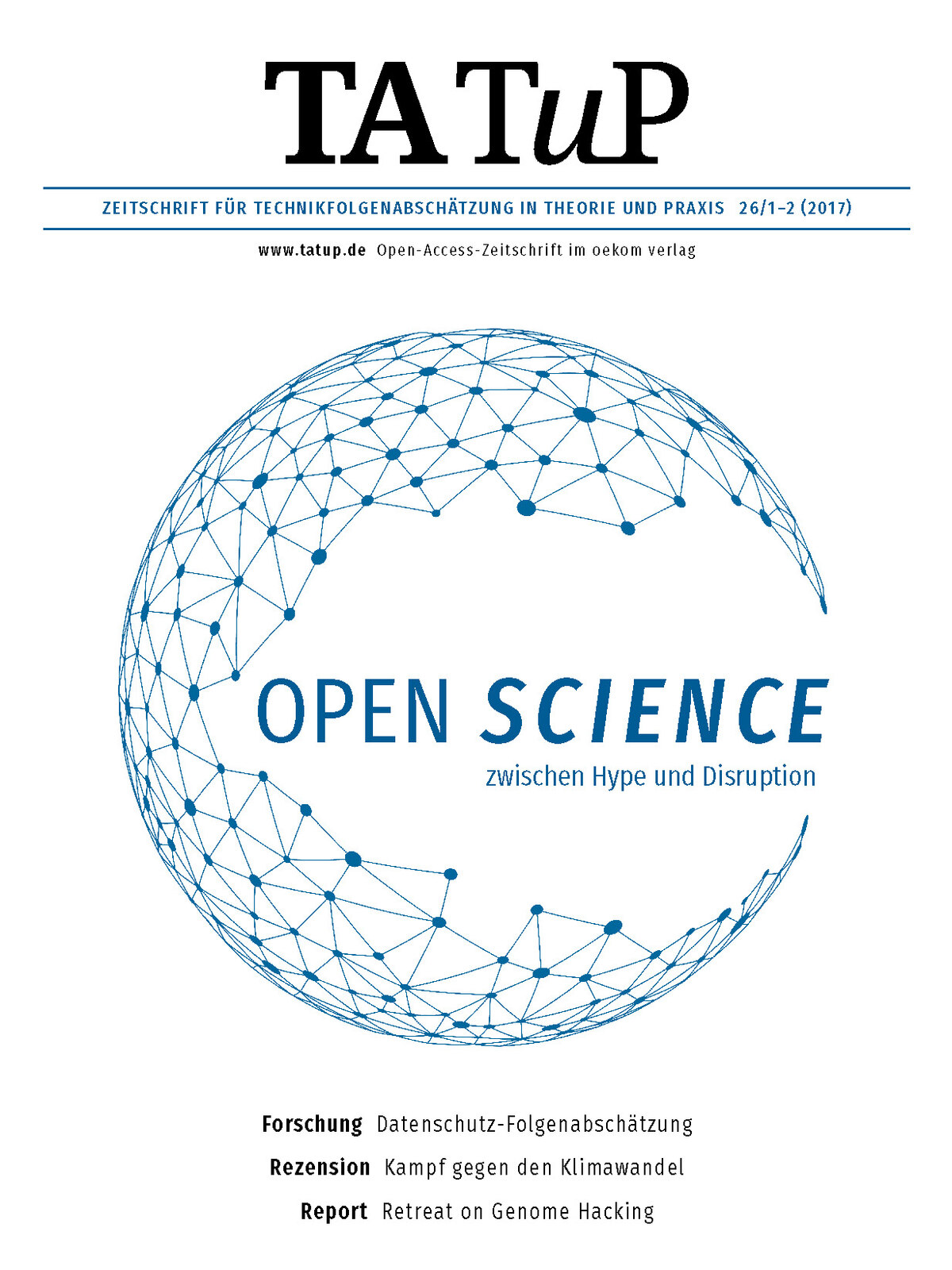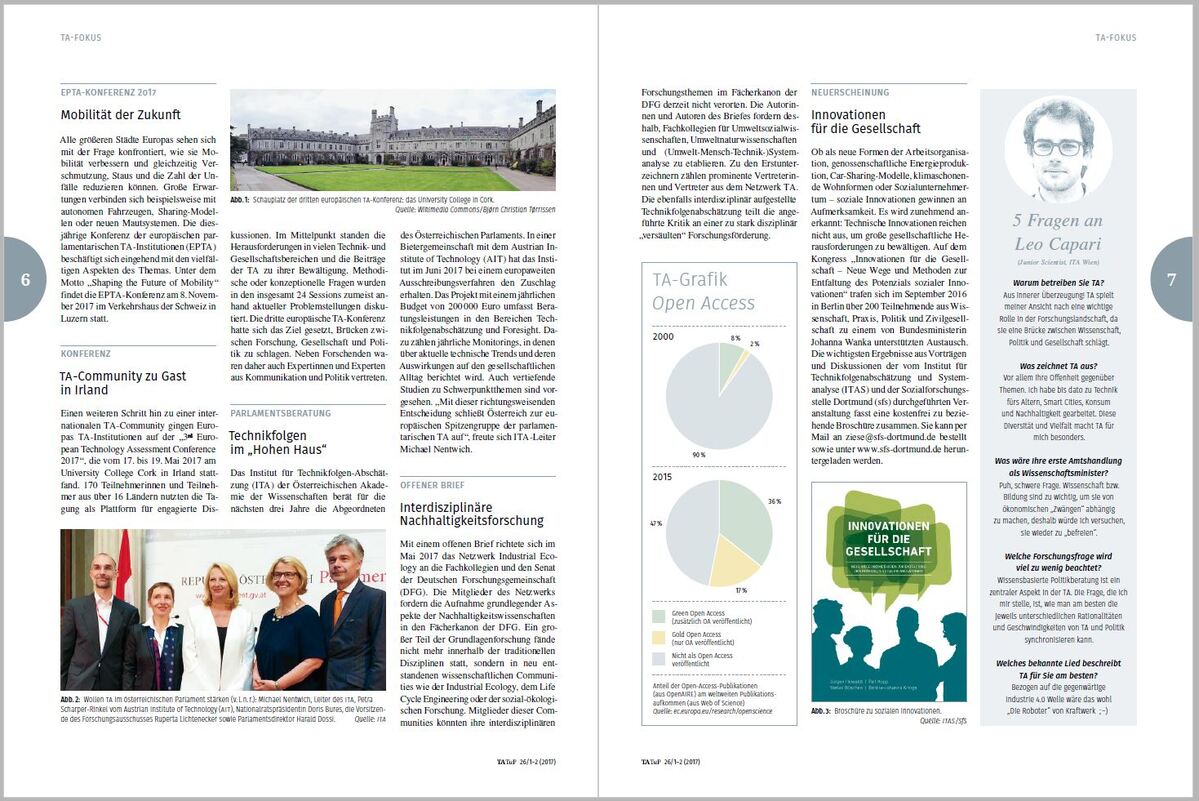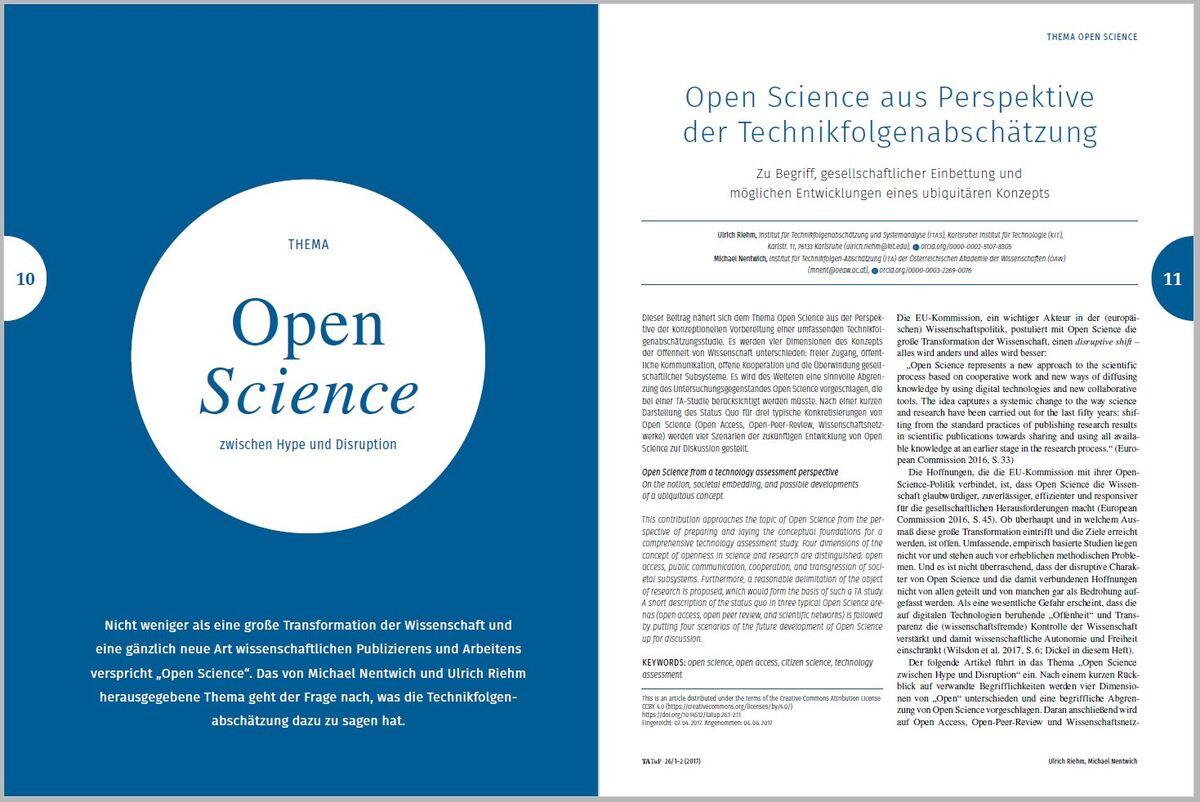Relaunch TATuP: Same name, new look
Goodbye ivory tower: The European Union expects nothing less than a major transformation of science and a completely new way of scientific publishing based on the concept of “open science” enabled by the rapid development of digital communication technologies. The declared goal is to refrain completely from the publication practices used so far: Scientists should make their findings and any underlying data accessible right at the beginning and through this put them up for discussion. In this way, research should not only become more credible, reliable, and efficient, but also be able to respond much faster than before to urgent societal problems like climate change, an ageing society, or the design of modern mobility and communication concepts.
But what exactly is implied by the term “openness”? In the future will science take place on public platforms similar to Wikipedia? Can transparency turn into surveillance? And how can public participation in research projects be realized in practice? These and other questions are subject of discussion in the current issue of TATuP (1-2/2017) on the topic “Open Science zwischen Hype und Disruption” (Open science between hype and disruption) which is edited by Michael Nentwich from the Institute of Technology Assessment in Vienna together with Ulrich Riehm from ITAS.
Peer-reviewed open access journal for the community and the public
“The subject of open science is perfectly suited for our first issue in several respects after the relaunch”, says managing editor Constanze Scherz. The deputy head of ITAS continues: “As experts for technology assessment we deal with ambivalences and uncertainties of new technologies. At the same time, we are interested in new ways to involve the public in scientific processes.” TATuP is commited to a large degree of openness and transparency: The printed edition which is published three times a year is free of charge. All texts are also available for free download at www.tatup.de. The further distribution via social media, reprints, and reproductions, for example for edited volumes or an electronic course reserve, are explicitly welcome.
But TATuP is also exploring other new grounds. A peer-review process for scientific articles in the sections “Special Topic” and “Research” aims to guarantee a high scientific quality and comprehensive language. TATuP also practices openness here: In contrast to most other review processes, reviewer and author know each other by name during the entire process.
TATuP does not only address the TA community, but also interested readers from politics and policy as well as the public. A new design, varied news, and the use of figures and pictures improve the readability also for non-scientists. “Science and especially technology assessment live on the exchange with the public. Therefore we deliberately decided to also work with elements which are not so common for scientific journals”, explains Constanze Scherz. This also includes the new interview section: In the current issue the editors talk to a Wikipedia administrator about “openness and its limits” at the largest online encyclopedia worldwide.
Although a predominantly German-language journal, TATuP welcomes contributions in English. All scientific articles include English abstracts. (09.08.2017)
Further links
- New TATuP web presence with the complete issue 1-2/2017 in full text and information on authors and reviewers (with English abstracts on all articles)
- TATuP pages at the oekom verlag (Subscription for the paper edition (free of charge) and the newsletter)
- TATuP on Facebook and Twitter




